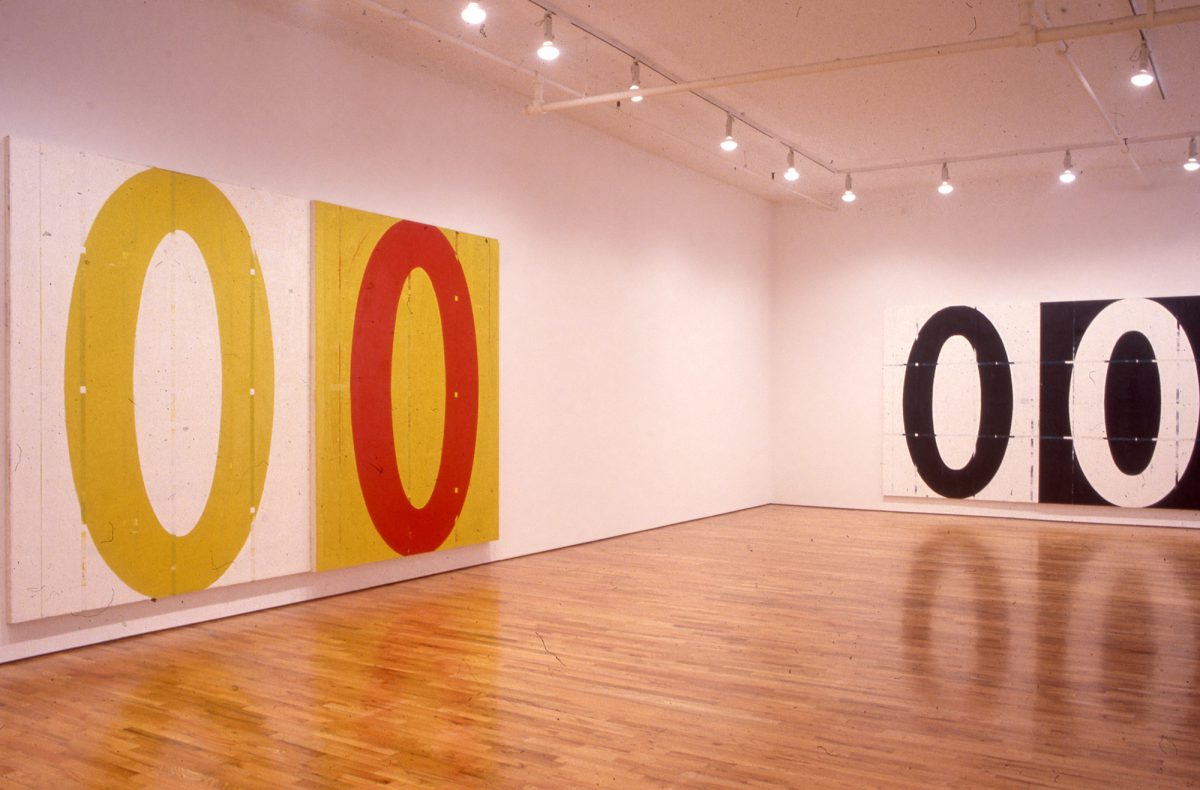June, 1994
by Barry Schwabsky
Artforum

1993, David Row at John Good Gallery
Like much of David Row’s work in the mid to late ’80s, but unlike the three-part paintings in his last New York show in 1991, his new paintings are mostly diptychs. Also marking a return to his earlier style, color, while far from an afterthought, is a recessive element in these new paintings, giving way to more broadly structural—or better, logical—concerns. I once called Row’s early ’90s paintings meditations on the numbers one, rwo, and three; maintaining the mathematical paradigm these new paintings are meditations on the numbers one, two, and zero.
In these new paintings the broad, oblate arcs which had long been primary constructive units in the artist’s work formerly considerably fragmented and arbitrarily recombined—have, surprisingly, gathered and combined themselves to form the numeral zero, one zero to each half of the diptych. While referring to the notion of gesture as it occurs in Abstract Expressionist painting, Row’s elliptical forms— executed as they clearly are with the mediation of stencils—represent a stress of that gesture toward the mechanical and prosaic, away from the emotive and lyrical. This is even more the case now, although Row’s facture has hardly become mute, uninflected, or anonymous; far from it, but it is all the more obvious that its tactility, characterized by a certain brutal lushness, is the result of the system of its production rather than a micromanagement of paint application. The layering of the surface is in fact rather complex, and because Row uses the removal of the masking tape holding down the stencils as a marked step in the painting process, the image is traversed, both at and under the surface, by the grid formed by the “ghosts” of the tape. All of this acts in counterpoint to the curvilinear thrust of the primary signifier, that perplexing cipher— “a reality without a concept,” as Hegel called the zero, or at best (in the words of Gottlob Frege) “the number which belongs to the concept ‘not identical with itself,'” indicating above all the nonreferential rather than “realistic” and iconic nature of the system that employs it. Whereas a few years ago Row’s work seemed to designate a dispersed and nontotalized subjectivity, bis conscription of this representational abstraatiqn—this figure which is not one— and particularly its specular doubling through the abutment of panels, seems to invoke the empty specularity of the (Lacanian) subject who yokes it fragmentary impulses around a primordial lack. Aiiu yet, does the evident monumentalizing of this identity through grand scale, commanding frontality, and unyielding material/visual density, amount to a knowing mystification or does it allow the visual and the mathematico-linguistic levels to allegorize and deconstruct one another? The choice throws us back upon a judgment that resists any formalization.